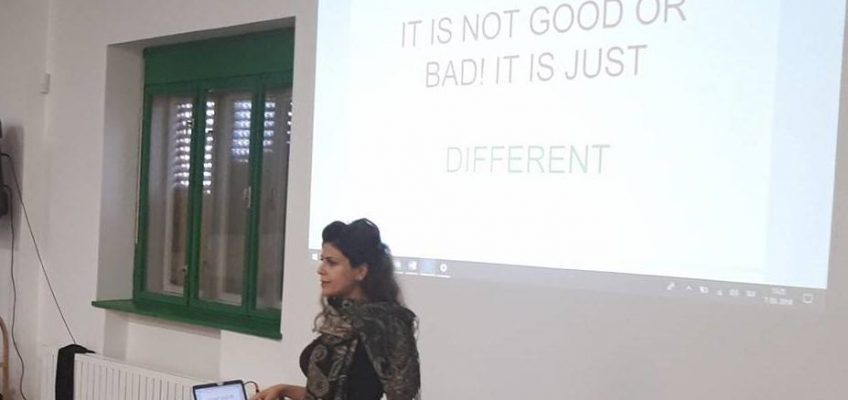Mitchell hammer created the Intercultural Conflict Style Inventory. It describes different approaches when entering conflict based on our cultural backgrounds. This model describes the different styles based on 1. To which extent we express or do not express our emotions and arguments and 2. The way we express our thoughts and/or feelings. The expression or the lack of it is presented in four styles. David Kolb created the experiential learning cycle. A revolutionary approach in education. It relies on two main processes in the learning journey: the conceptualization process and the perception process. It contains two continuums between doing, thinking, watching and feeling. Kolb, identified at first four learning styles and later he revised it with Alice Kolb. They added more three styles to become seven. Every learning style indicates different preferences between observing and feeling in connection to doing and thinking. Kolb, identified different factors that influence our learning styles. Among these factors are the social environment and life experiences. These factors are also an important composure of one’s culture. Culture was studied by different researchers as an influencer on our learning style.
At first glance a similar pattern can occur between the four styles of communication in intercultural conflicts by Mitchell hammer and the experiential learning cycle with the seven learning styles by David Kolb. Mitchel hammer, emphasized on two continuums on how we act in conflicts. These continuums describe 1. the extent to which we express our arguments and emotions and 2. The way we express it or do not express it. This means that our style in conflict is not only influenced by our reasons and feelings but also by the way we express it or do not express it. This goes in line with the two axes by Kolb on how we learn. David Kolb identified the perception continuum that refers to the way we feel or think of a task and the processing continuum that refers to the way we approach this task. Therefore, both inventories by Kolb and Hammer have similarities when it comes to 1. The way we think or feel of an issue and 2. The way we approach this issue in connection to feelings and thoughts.
Dr. Milton Bennett, created the scale for intercultural sensitivity. This scale identifies 6 stages where we can develop our intercultural competences from ethnocentrism to ethnorelativism. Maria Angelo said “I've learned that people will forget what you said, people will forget what you did, but people will never forget how you made them feel”. The bennet scale for intercultural sensitivity is built on the concept of empathy. According to this scale it is not enough to have knowledge and information about other cultures, but also to feel the power of empathy toward it. To shift from ethnocentrism to ethnorelativism we need to enhance our intercultural sensitivity where we realise that differences are not good or bad, it is just different.
The last stage in the bennet scale for intercultural sensitivity is integration. Integration refers to the stage where people are no longer strictly affiliated to a mono-culture. When people are integrating aspects from different cultures into their cultural identity. We are on this level when we can easily interact and have various counters with other cultures without being limited in an ethnocentric view, and without being affiliated to a mono-culture. According to the intercultural conflict style inventory by Mitchell hammer people who are interculturally competent are able to adapt to the different intercultural conflict styles. They are able to solve conflicts within an intercultural context by adapting and integrating with the different intercultural conflict styles to be able to solve the conflict.
Thus, if we become interculturally sensitive we will develop our skills and competences to mentoring our actions and feelings from our personal style toward other styles. This means that interculturally sensitive people encounter a diversity of life experiences and social environments. Thus, when we become interculturally sensitive our social environments and life experiences change. It becomes more diverse as we are no longer living from one ethnocentric view. Kolb identified the social environment and life experiences as affecting factors on our learning style. Kolb and Kolb assured how culture is one of the factors that influence our learning style to a certain extent.
These initial observations lead us to the following questions: 1. What is the connection between the intercultural conflict styles and the learning styles? 2. How becoming interculturally competent influences our learning style?
The connection between the Intercultural Conflict Style Inventory and the Kolb learning styles inventory:
- The direct style in intercultural conflict and the converging style in learning:
- The engagement style in intercultural conflict and the accommodating learning style:
- The dynamic style in intercultural conflict and the diverging learning style:
- The accommodation style in intercultural conflict and the assimilating learning style:
Samar Zughool is a researcher on feminist movements and public policy making in democratization. She holds a Master’s degree with excellency from the Faculty of Social Sciences at the University of Ljubljana, and holds a Bachelor’s degree in French language and literature from the University of Jordan. She is an intercultural learning and communication trainer and project coordinator.
If you wish to discuss this article or have any comments, email me to: samar.mediator@gmail.com.


